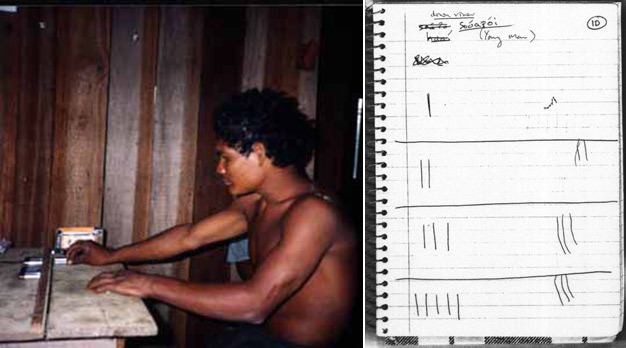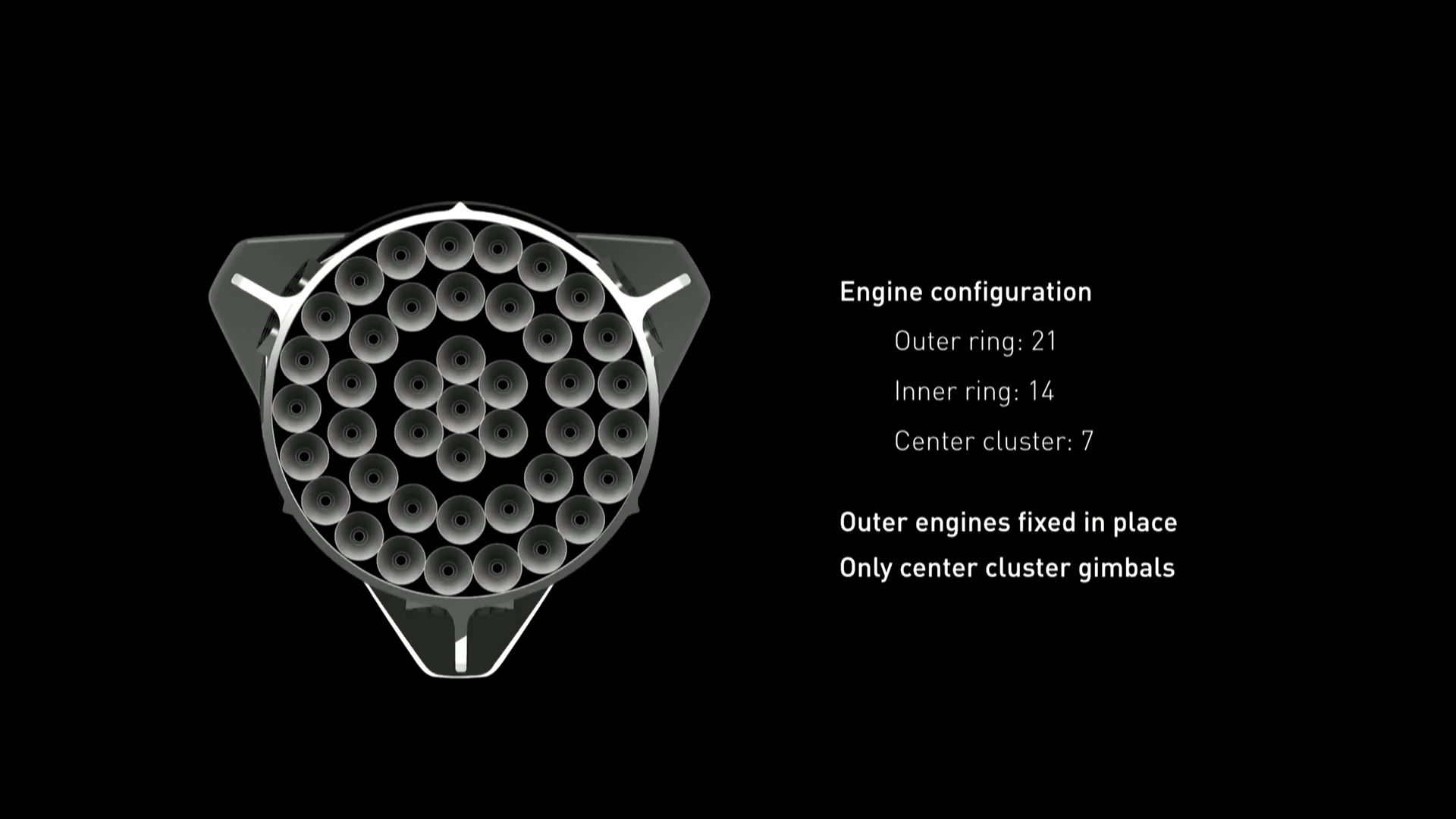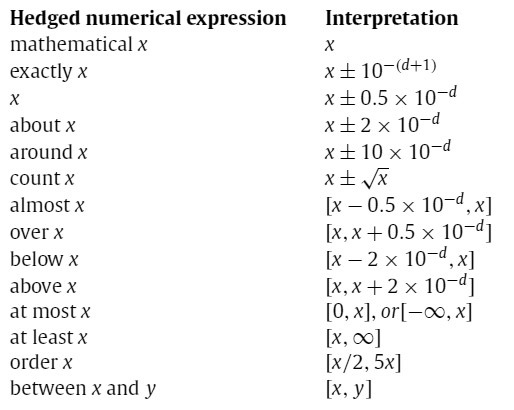The beauty of numbers. Adaptation of numbers for the brain: rounding and linguistic modifiers

A representative of the Pirahan people from Amazonia is trying to fit the same number of batteries in a row as he sees on the other side of the table. During another test, you need to draw in the notebook on the right the same number of sticks, which is drawn on the left.
The human brain is ill suited for representing and processing numbers. Evolution has not shaped this skill. By and large, numbers are generally not required for survival, that is, for ancient man, knowledge of arithmetic was not an evolutionary advantage. Such an evolutionary advantage for individuals appeared only after the invention of trade and finance. Prior to that, the ancient people in communication had the words “one,” “two,” and “many.” Actually, these words are limited to the ability of an ordinary person today, if he has not received special training.
People have extremely weak innate abilities to process numbers: a person without training is usually able to distinguish numbers up to only three or four . This is a skill that needs to be specially mastered and carefully trained. Thinking about numbers can simultaneously activate several cognitive systems in the brain, including a system for processing visual information, as shown by a 2008 scientific study of Burr and Ross . For such a complex task, there is simply no specialized department in the brain (an arithmetic co-processor), so third-party departments have to be involved, adapting them for this task.
The invention of numbers was necessary for the appearance of trade. In all human societies where trade was invented, numbers and number systems were invented at about the same time. But there are separate human societies in which they have not invented numbers and there is no counting system, at least on the fingers. The study of representatives of these tribes showed that it is very difficult for them to cope with any numbers of more than three. Representatives of these tribes clearly demonstrate the innate abilities of the human brain to count, without additional training. They freely use only the quantities “one”, “two” and “many”.
')
Different number systems were repeatedly invented in human history, by different nations at different times. Every nation found its solution to this problem. Suffice it to recall the advanced nodular writing of the pile , which the Incas invented about III. BC. This is one of the most ancient (after the Sumerian cuneiform and Egyptian hieroglyphs) types of writing in humanity.
The nodal script consisted of numeric entries of the decimal coding system, as well as non-numeric entries in the binary encoding system. Primary and additional keys, positional numbers, color coding, and the formation of a series of repetitive data were used in the pile. Some of these concepts have been re-used only with the invention of relational databases of the information age of the 20th century.
The invention of the number system and the corresponding writing is a key stage in the development of any human civilization when it reaches a new level of development. When a person has mastered this writing and has learned to operate with abstract numbers in the mind, completely new possibilities and new fields of knowledge open up before him.
Most modern people have such skills. Figures surround us everywhere - in books, newspapers, in the store and on money, which for many are the most important object in life, measure and assessment of the dignity of life and position in society. If earlier the social position of a male in a group was determined by non-verbal factors, now it correlates well with the number into which his tangible assets are valued.
Understanding the enormous importance of numbers and money in modern society, one must still remember that abstract thinking and the presentation of numbers is completely unnatural for humans. Therefore, the brain tries to come up with all sorts of tricks to facilitate the task .
Rounding numbers
One of these tricks of our brain to facilitate the work with numbers is rounding. Surely everyone noticed on themselves and others that we have a particular passion for certain numbers. Of course, all this manifests itself in different ways. For example, Ilon Musk in his engineering projects likes to use special numbers from the book “The Hitchhiker's Guide to the Galaxy”: that is why they plan to install 42 engines on the future ship that will deliver the first colonists to Mars.

Still, for most ordinary people, numbers that end in 5 and 0 are the most memorable and easy to use. Archaeological studies have shown that not only modern people, but also representatives of ancient civilizations, including ancient Romans and even many primitive peoples from different parts of the world.
It is easy to guess that the rounding of numbers to 5 and 0 is due to our use of the decimal number system. In turn, the decimal system, as the most natural for human thinking, is based on the number of fingers on the hands (two hands on five fingers).
Abstract thinking and operations with numbers are unnatural for the brain, but the fingers are clearly, habitually and naturally. Thus, the brain can adapt an unnatural and difficult task, reducing it to simple and understandable manipulations. That is why people tend to circulate numbers to 5 and 0.
As the well-known popularizer of science, Yakov Perelman, notes in his book “ Entertaining Arithmetic ”, often in the census there is an excessive abundance of people whose age ends with 5 or 0; There are many more than they should be. Of course, the reason lies in the fact that people do not remember firmly how old they are, and unwittingly round off their age.
Tellingly, the same age rounding occurs on the gravestones of the ancient Romans. That is, there, too, the most common numbers are 5 and 0 in the designation of age. One of the scientific studies aimed to determine the popularity of various numbers in the designation of age on the monuments of the ancient Romans and in tombstones in the cemeteries of modern Alabama, populated mainly by black people. It turned out an amazing match. The frequency of occurrence of numbers of age among the ancient Romans and modern blacks is exactly the same. Numbers make up the same sequence:
0, 5, 8, 2, 3, 7, 6, 4, 9 and 1
And it's not just about age. Apparently, this is pure psychology. In the same scientific study, the results of various experiments were cited, where people were asked to determine “by eye” how many millimeters a strip of paper contains, for example, in a finger-length. A survey of modern Europeans and an analysis of the results produced the same sequence:
0, 5, 8, 2, 3, 7, 6, 4, 9 and 1
This can hardly be considered an accident. Representatives of different nations, people of different eras show the same bias in choosing numbers.
Why are numbers 8 and 2 more popular and more convenient for the brain than numbers 9 and 1? There is no definite answer to this question, although it is possible to put forward different versions. The only obvious thing is that the digits 5 and 0 are associated with rounding numbers convenient for the brain, in relation to the decimal number system.
The rounding of numbers occurs not only on a subconscious level. Some businessmen skillfully manipulate this feature of human thinking. For example, during a job interview, an applicant is usually offered a salary rounded up. For example, 100,000 instead of 95,000, because the figure of 100,000 seems more solid and significant than 95,000.
Sellers of goods come exactly the opposite. Instead of the price of a product of $ 10, they indicate the price of a product of $ 9.99, which subconsciously seems less significant than $ 10.
Linguistic Modifiers
Initially, numbers and number systems were invented in order to support trade, which could not operate with familiar concepts, such as "a few", "a lot", "more", "less", "a little bit". After the introduction of numbers they became an integrated part of the language and are now constantly used in speech. The numbers allow you to absolutely accurately and clearly determine the number of objects.
But the high accuracy of the numbers has a reverse side - it is not always convenient, and sometimes it is almost impossible to specify the exact number. Therefore, in everyday speech, words are still used that act as linguistic modifiers, replacing and mitigating the excessive accuracy of ordinary numbers.
Linguistic modifiers are defined as words capable of changing aspects of the meanings of other words to which they are directed. Modifiers can be considered as a kind of a kind of a kind of euphemism.
Euphemisms and modifiers are crucial in human communication. Otherwise, we would very much offend each other, telling the exact truth bluntly. Thanks to these auxiliary linguistic constructions, we can soften the statements - to speak the truth, but in pleasant formulations.
For example, in the phrase “ You have become very fat lately ” in everyday communication, using the euphemism “ recovered ” for the verb “ put on weight ”, for more details see also the concept of “ polite fiction ” when all participants in the conversation know the truth to avoid conflict.
Modifiers are also important in the conversation, because they give additional information about the intentions of the interlocutor. For example, the modifiers "by the way" and "by the way" indicate a desire to change the topic of conversation. The protective modifiers “I think,” “it seems to me,” are used to soften sentences, just as the aforementioned euphemism “recovered” instead of “put on weight”. The masters of verbal negotiation skillfully and plentifully apply both euphemisms and modifiers simultaneously.
As linguistic studies show, modifiers are very often used next to numbers or instead of them . This is due to too high accuracy of numbers, which is not always appropriate in a conversation. For example, in a discussion or dispute, the use of a digit without a modifier makes a person vulnerable — he can be directly caught up in lies or inaccuracies if the digit, even for the smallest part, is not true.
For example, the “about” modifier blurs the bounds of a value by about 10%, although the specific values of the lower and upper bounds depend on the particular number.
For example, the phrase
About (approximately) 105 people came to the party
usually means that between 100 and 110 people have come to the party.
On the other hand, the phrase without modifier
105 people came to the party
does not have upper and lower limits of acceptable values. Thus, it can be taken either as an absolutely accurate documentary statement, or as an approximate estimate, but with a smaller range of boundaries. Probably from 103 to 107 people would be acceptable understandable values.
Thus, the “about (approximately)” modifier significantly expands the range of acceptable values.
Interestingly, a round number itself is assumed as a numeric modifier with an extended range of boundaries for the lower and upper values.
For example, the sentence
1000 people came to protest
by itself, it suggests that the number of Protestants is not exactly 1000 people. Such a phrase is, in fact, synonymous with the expression “About 1,000 people came out to protest” (the exact number is about 800 to 1,200). Accordingly, in this case it makes no sense to use the “about (approximately)” modifier to extend the range. On the contrary, it makes sense to use another “exactly” modifier to narrow the range.
Sentence
Exactly 1000 people came out to protest
eliminates the range completely and means that 1000 people came to the share specifically, not one more, one less.
Numerical evaluation of speech approximators
Linguists have repeatedly tried to formalize the use of digital modifiers. For example, the United States Central Intelligence Agency based on scientific research in 1964 made up such a table of translation of the speech approximation probabilities to specific numerical values and vice versa.
100% - definitely (undoubted fact). In this
93% - almost certainly
75% - probably
50% - the odds are about equal
30% - most likely not
7% - almost certainly not
0% - unbelievable
The CIA lists a specific list of verbal revolutions that correspond to each probability of an event. For example, for the probability of 75%, the phrases “it seems to us”, “we consider”, “probably” are appropriate. For the probability of 93%, the phrases “very likely”, “most likely”, “almost certainly” are appropriate.
Recently, linguists have more thoroughly studied this problem. For example, Scott Ferson and colleagues propose the following table for translating English approximators into specific numerical values.

The value of d corresponds to significant decimal places after the decimal point for a particular number x. for example, if x = 7, then d = 0. If x = 7.0 or 7.1, then d = 1. If x = 700, then d = −2.
This table is desirable to adhere to in speech and writing, if we want to formalize the value of modifiers.
Source: https://habr.com/ru/post/372903/
All Articles